
Employee communication and workforce management are at the core of organizational success in today’s dynamic workplace. Whether employees are desk-based or frontline, companies need tools that enable smooth communication, task coordination, and engagement. Platforms like Connecteam have become popular for their all-in-one approach—bringing together communication, task management, scheduling, and training into one app.
But while Connecteam is powerful, it may not always be the perfect fit. Every organization has its unique challenges—some prioritize mobile-first communication for frontline employees, others require stronger analytics, while some want more customizable intranet capabilities.
This blog explores the top 10 Connecteam alternatives in 2025, providing a detailed look at their features, user experience, and unique selling points, so you can identify the best-fit platform for your business.
Connecteam is widely recognized for its versatility and affordability, but companies may seek alternatives for several reasons:
Specialized Needs: Some organizations want a tool dedicated primarily to internal communications or intranet functions rather than workforce management.
Scalability: Larger enterprises may require more advanced customization, integrations, and analytics that go beyond Connecteam’s core offering.
Industry-Specific Requirements: Businesses in healthcare, manufacturing, or retail often need specialized compliance, training, or security features.
Employee Experience Focus: Some companies prioritize employee engagement and culture-building over task management.
With a growing market of employee communication and workforce apps, alternatives to Connecteam provide compelling options.
When evaluating Connecteam alternatives, we’ll focus on the following dimensions:
Features
Internal communication tools (chat, announcements, and news feeds).
Employee engagement features (surveys, feedback, recognition).
Intranet and document management.
Workforce scheduling, task management, and training.
Analytics and reporting.
Integration with HR and productivity software.
User Experience
Simplicity and mobile-first usability.
Customization options for branding and workflows.
Smooth onboarding and training resources.
Unique Selling Points (USPs)
Standout features that give the tool a competitive edge.
Credibility, adoption, and customer satisfaction.
Specialization for industries, company sizes, or workforce types.
Now, let’s look at the 10 best alternatives to Connecteam in 2025.
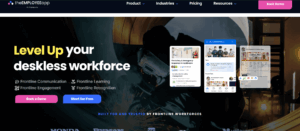
theEMPLOYEEapp is a mobile-first employee communication platform built to serve frontline and deskless workers who often don’t have access to corporate intranets or email. Unlike many “all-in-one” platforms, TheEmployeeApp doubles down on its mission to bridge the communication gap between leadership and the frontline.
Before we dive into the features, it’s important to highlight why TheEmployeeApp is so relevant as a Connecteam alternative. Connecteam combines task management with communication, but organizations with large frontline teams often need a tool that prioritizes communication above all else. This is where TheEmployeeApp excels.
Mobile News Feed: Real-time updates with push notifications to ensure important information reaches everyone.
Document Sharing: Upload schedules, policies, or training materials for easy access.
Surveys & Feedback: Capture frontline employee sentiment instantly.
Event Management: Promote company-wide events, training, and sign-ups.
Secure Messaging: Role-based permissions to protect sensitive data.
Integrations: Compatible with HR and collaboration platforms for smooth workflows.
Designed with frontline accessibility in mind, TheEmployeeApp offers an intuitive mobile interface that requires little training. Employees can easily receive updates, access resources, and give feedback directly from their devices. For industries like healthcare, logistics, retail, and manufacturing, this mobile-first design ensures inclusivity and real-time communication.
TheEmployeeApp’s USP lies in its laser focus on frontline communication. While other tools try to be multifunctional, TheEmployeeApp ensures critical company information flows seamlessly to the entire workforce—especially those not at desks. This makes it a powerful choice for organizations that want to prioritize accessibility and communication without overwhelming employees with too many features.
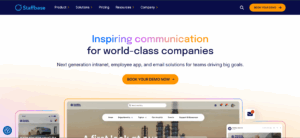
Staffbase is a leading employee communication platform that helps enterprises build branded employee apps and modern intranets.
Key Features
Custom-branded mobile apps.
Centralized news feed and announcements.
Employee surveys and analytics.
Strong intranet capabilities with document libraries.
Multilingual support for global workforces.
USP
Staffbase excels at creating branded, enterprise-level communication experiences that integrate seamlessly with HR and IT systems, making it ideal for large organizations.

Joinblink is an intranet and communications platform designed to centralize employee engagement.
Key Features
Personalized news feeds.
Employee recognition tools.
Document storage and knowledge sharing.
Integrations with Microsoft 365 and Google Workspace.
USP
Highly customizable and scalable, Joinblink works well for companies looking for an intranet-driven approach to employee communication.
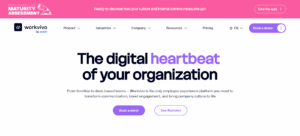
Workvivo blends internal communications with social engagement, offering an experience similar to popular social platforms.
Key Features
Social media-style feeds.
Peer recognition features.
Surveys and polls.
Integrations with Teams, Slack, and Zoom.
USP
Its familiar, social-first design makes adoption seamless, driving higher engagement levels.
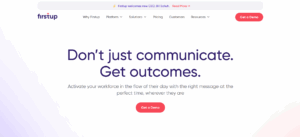
FirstUp (formerly SocialChorus) is an employee experience platform that delivers personalized communications across multiple channels.
Key Features
AI-driven targeting based on role or location.
Multi-channel distribution (mobile, email, signage).
Advanced analytics dashboards.
USP
FirstUp’s personalization engine ensures employees get relevant updates without information overload.
Beekeeper is built specifically for frontline workers, making it one of the strongest Connecteam competitors.
Key Features
Secure chat and announcements.
Shift management and scheduling.
Document and file sharing.
Surveys for frontline engagement.
USP
Beekeeper specializes in hospitality, retail, and manufacturing, where reaching frontline teams quickly is critical.
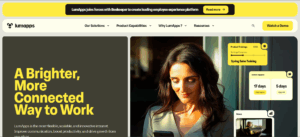
MangoApps is a unified employee experience platform combining communication, intranet, and collaboration.
Key Features
Company news and announcements.
Modern intranet with document libraries.
Collaboration tools (chat, projects, file sharing).
Employee recognition features.
USP
MangoApps is ideal for organizations seeking an all-in-one digital workplace, replacing multiple disconnected tools.
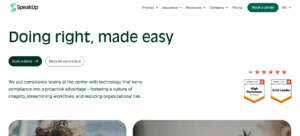
SpeakAp is a mobile-first communication platform focused on large frontline organizations.
Key Features
Branded employee communication apps.
Secure one-to-one and group messaging.
Targeted announcements for different teams.
Multi-language support.
USP
SpeakAp is designed for global, frontline-heavy companies that require scalability and localized communication.
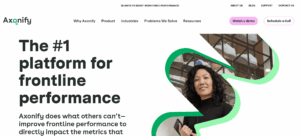
Axonify focuses on microlearning and communication for frontline workers.
Key Features
Personalized learning modules.
Gamified training experiences.
Communication and engagement tools.
Real-time knowledge reinforcement.
USP
Axonify stands out as a training-first platform that integrates communication, making it highly effective for compliance-heavy industries.
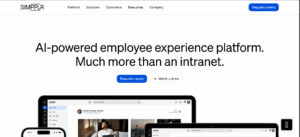
Simpplr is a modern intranet solution designed for employee engagement and communication.
Key Features
AI-powered content recommendations.
Personalized feeds and communities.
Engagement analytics and reporting.
USP
Simpplr is best suited for organizations that want a fast, user-friendly intranet that doubles as a communication hub.
While Connecteam provides a flexible, all-in-one platform for communication, scheduling, and task management, it’s not the only option in 2025. Alternatives like TheEmployeeApp, Staffbase, Beekeeper, Workvivo, and Axonify each bring unique strengths—whether it’s frontline communication, social engagement, microlearning, or enterprise-level intranet functionality.
By carefully comparing features, user experience, and unique selling points, organizations can choose the solution that best fits their workforce needs. The right platform not only streamlines communication but also strengthens engagement, culture, and productivity—setting the stage for long-term success.